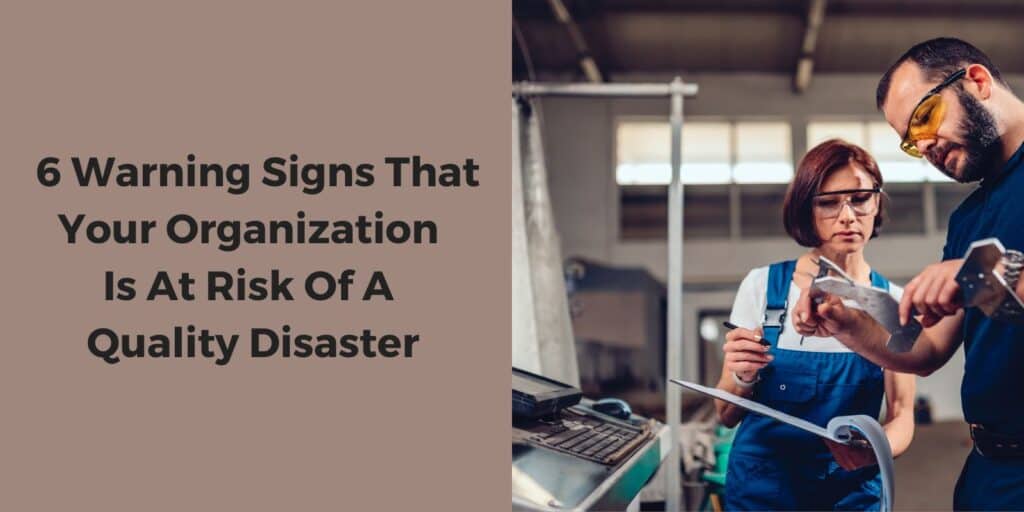Estimated reading time: 5 minutes
Whether business or personal, we all expect when we purchase a product that it is free from defects. Service and product quality is what separates the successful from struggling businesses.
Consumers have raised the bar regarding what they expect in terms of service and product quality.
The tension organizations wrestle with is managing the cost of delivering high-quality products and services with a profitable bottom line.
This can be a tender balance, but it needs to be done.
Because poor quality not only leads to lost customers but often results in defensive litigation.
Consumers lose confidence in an organization when there is a gap in their quality.
To give you an idea of how often this is happening, for the month of July, 2023 the Consumer Product Safety Commission reported 14 products that were being recalled. And while the probability of harm is low for many of these recalls, they all pose some level of safety risk.
Quality disasters happen all too often, resulting in loss of life, loss of consumer trust, and a lot of lessons learned.
Here are a few examples of quality disasters.
Toyota and Chrysler have recalled nearly 270,000 vehicles.
The National Highway Traffic Safety Administration issued multiple recalls last week, including more than 160,000 Toyota vehicles, for increased fire risk due to a possible fuel leak.
Chrysler also recalled nearly 45,000 vehicles for a potential airbag deployment problem.
It makes you wonder how these companies with such magnitude and reputation for quality end up with such quality disasters.
The good and bad news is there are often warning signs of an impending disaster. However, all too often, these signals are not acknowledged or simply ignored.
Organizations that focus too heavily on corporate profits by cutting costs in key areas that manage its quality are at risk of delivering less-than-perfect products and services.
Which, over time will sadly impact its reputation and ultimately the bottom line.
6 Signs that Quality is at Risk
1. Deep Cost Cutting
Every organization needs sufficient cash flow and to operate with a budget and manage its money. Without which, there will be no business.
However, there is a saying that it takes money to make money, and all too often, organizations start cutting those fundamental functions within an organization that helps to measure and manage its quality.
Cost-cutting that affects normal quality improvement cycles of define, measure, analyze, improve, and control (DMAIC) and Plan, Do, Check, Act (PDCA) will eventually affect overall product quality.
It is nearly impossible to maintain high quality in any area without investing in the management of it.
2. Missed Signals
Effective quality initiatives incorporate a strong workplace safety program and have built-in warning signs to avert disasters and a Public Relations nightmare.
When a work culture fosters a mindset that ignores the quality warning signs, that are put in place to protect employees and the organization, it is a recipe for disaster.
For example, when oil pressure readings are ignored because of the expense of stopping the operation there is a known risk for a potential incident.
3. Equipment Breakdown
Product quality is dependent on preventative maintenance, outsourced maintenance services, and replacement of aging equipment.
When critical preventive maintenance hits the cost-cutting chopping block, the long-term impact on product quality can be at risk.
Using old and faulty equipment increases the likelihood of breakdowns, increased product defects, and often workplace injuries.
4. Training Cuts
Trained employees are the ones who do the work and serve the customers. Employees need continuing education in every aspect of their job.
Whether they are working with complex equipment or manning the customer helpline, employees need to be trained to do the job the way you want them to do it.
Followup training is also important to ensure that employees “don’t forget” what is expected of them to do their job.
5. Personnel Cuts
It takes people to manage the quality of products and services. These employees have the responsibility of overseeing every aspect of the quality process.
When personnel cuts are made that impact the oversight of quality progress and improvement projects, the deterioration of organizational quality is inevitable.
For instance, if the quality assurance employee is let go because of budget cuts, those responsibilities need to be delegated to another employee’s job description.
6. Customer Assistance
Customers are what drive the revenues of every business. Cost-cutting that impacts the customer experience can be a recipe for disaster.
Customer service personnel are needed to help address customer complaints, gain customer perspective, and resolve service or product issues.
Creating a balanced approach to strategic objectives with identified critical success factors is the best way to manage the tendency to overemphasize profit margins.
Quality Is a Balanced Approach To Management
A balanced approach to organizational management focuses equally on human resources, operational performance, customer satisaction, finances and market share.
Sacrificing quality for increased profits is as ill-advised as sacrificing a balanced budget for customer satisfaction.
A balanced approach helps keep all priorities in check and can alleviate some potential quality disasters.
I don’t know for sure, but I would guess that the cost of the Toyota and Chrysler recall will probably cut into corporate profits a bit, wouldn’t you say?
How well does your organization manage its service and product quality?
